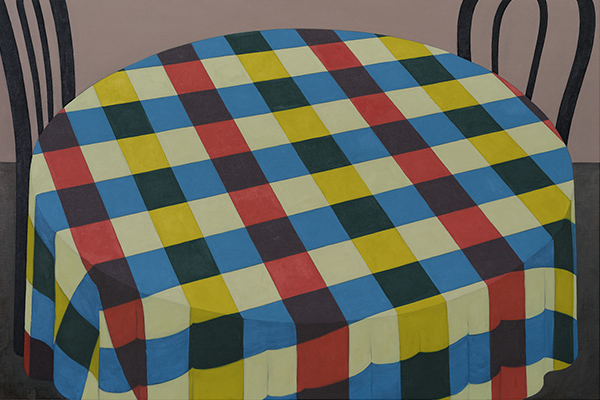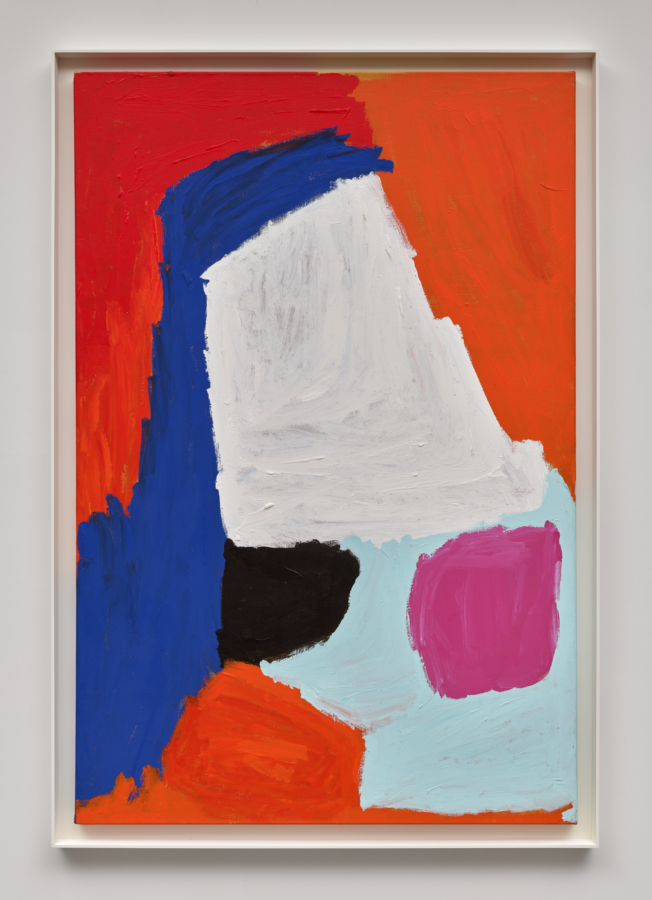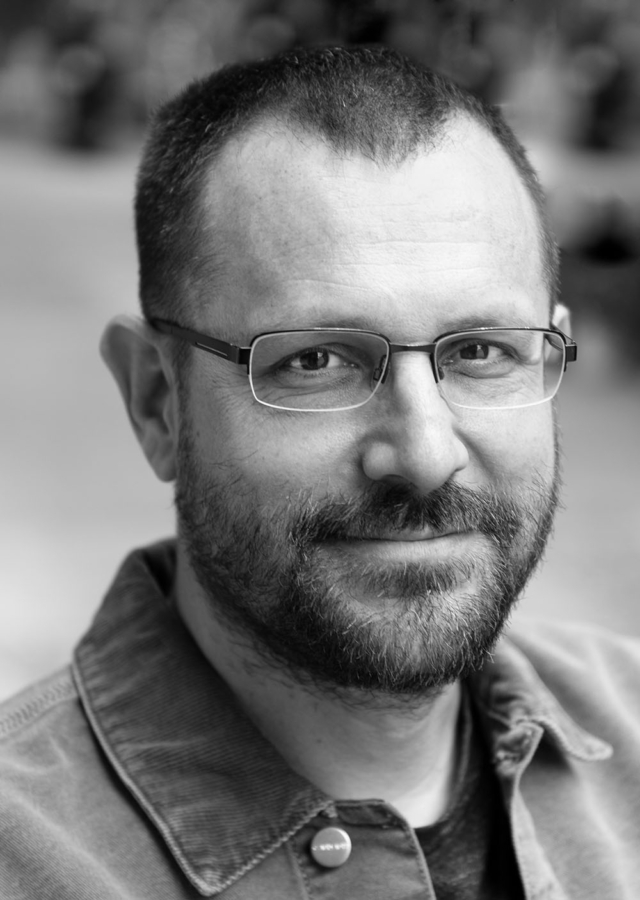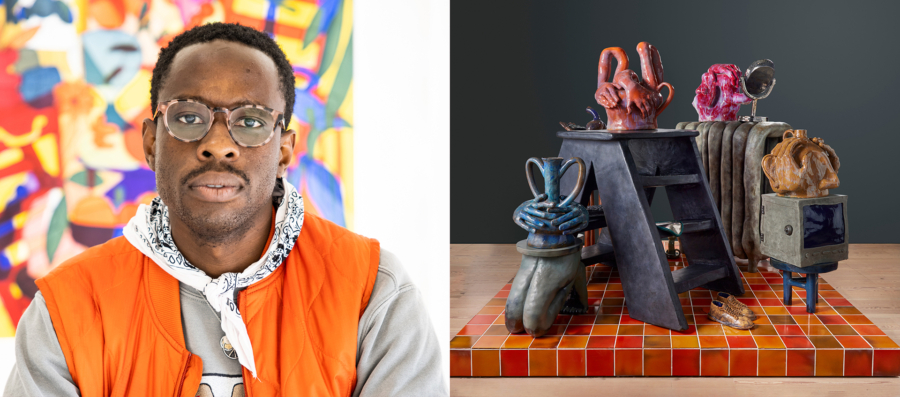July 2, 2018
Paul Lee, published by Karma, New York, 2018.
Download as PDF
Paul Lee is available here
Peter Halley: What’s the most important thing you would like people to know about your work?
Paul Lee: Without wishing to frame the sculpture in an overly socio-political way, I think it is important to acknowledge my personal experience. Growing up I felt very conscious of homophobia. There was little diversity in how gay people were represented so I had nobody to relate to. There was the AIDS crisis. And, to add a sense of the political climate regarding gay rights, I think the only concrete progress made at this time was you couldn’t be sent to jail.
PH: That must have been extremely isolating to you as a young person.
PL: I think it was. As a young person without role models, my physicality and everything to do with my desire—feeling, touching, seeing—seemed like it should be suppressed or questioned. This experience is at the core of my work. I think it is why I approach things the way I do; it’s something I am opening up through sculpture, itself an abstracted physicality. In a way, I’m taking back my desire and combating that experience.
PH: What is the range of work contained in this book?
PL: It spans from my first New York show Reservoir in 2006 to my latest show in London in 2015. There are examples of many different sculptural series, but I’ve also worked in video and collage and those ways of making work are not represented in this book. This book is sculpture.
PH: Which works were in your first exhibition?
PL: Some of the can sculptures, and some washcloth and towel sculptures.
PH: For how long did you continue to incorporate the aluminum beverage cans?
PL: I still use them here and there, when I find things in my studio that I think will work or that I can do something interesting with. Sometimes I’ll make one because I have a can with an image on it in my studio and it will be next to something interesting or suggestive. I also keep a box of possible elements. I don’t know if I’m ever going to stop. Sometimes I think I’m done, but I come back to them for some reason.
PH: It sounds like themes enter the work, but they don’t necessarily ever leave.
PL: I guess what I’m learning is that it’s a non-linear process. Ideas leave and come back, and reappear in different forms. I like using the same object in different ways. You can use the same material in one sculpture, but it does a different thing in another sculpture. It’s not necessarily about how the work looks, but what the object does. I find it interesting displacing a functional object into a sculpture. I like how function speaks to truth.
PH: That’s very interesting. Is this why the book isn’t arranged chronologically?
PL: Brendan Dugan has worked on the book with me for a while. We decided to organize it by color. In the conversations about my work with him over the years he really understood the way I think about color and how I use color as a kind of language that relates to nature, or how I use it to evoke a particular thing.
PH: I’ve seen several of your shows, but there were lots of pieces in the book that were new to me. I’d never seen the arrangements of rocks before.
PL: The rocks . . . there’s still a pile of them in my studio. I’ve cut into them and painted on top of the cuts. I’ve made walls with them. I was using little pieces of coal in the aluminum can sculptures, and the rocks came from that. I found this one rock in Provincetown on Cape Cod and have cast it over and over again throughout the years.
PH: These are cast rocks?
PL: Yes, they sit around my studio and get beat up and they become quite realistic-looking. It’s like they become their own kind of organic thing.
PH: Is that the only story they tell for you?
PL: The rocks represent the idea of somewhere else. They’re taken out of the world and then, when they’re in the context of my sculpture, they represent a different environment, often a place near water, and water is an important theme in my work. I don’t think I’ll continue to use the rocks though as they represent an artificial “nature.” At this point, I don’t feel that this is the direction that I want my work to go in.
PH: Light bulbs are used in the work in lots of different ways. I like the pieces where the light bulbs are placed on top of a pedestal.
PL: I became interested in the podium or pedestal as something used to display desirable things. I wanted to make the podium itself the sculpture. The light bulb is another way of suggesting desire, but it has other associations for me: a room, a drop of water, and also a thread through art history with gay artists.
PH: Like Jasper Johns?
PL: Johns, Robert Rauschenberg, Robert Gober, Félix González-Torres, there’s been a few.
PH: Joseph Beuys made a piece with a yellow light bulb and a lemon as well.
PL: I like the idea of a yellow light bulb. Yellow gets used a lot in my work and I always think about it as the color that is representative of light. So when you have a yellow object, it’s an object that exists as a picture of light.
PH: There is a lot of yellow in your work. The color is very evocative. I hadn’t quite realized that individual colors—yellow, red, blue, black, green—are all thematic for you.
PL: It started off with red being a color that I thought of as being erotic and associated with desire, and green associated with landscape. But they change in relation to one another, like red in relation to black, which was always interesting to me because black can represent matter and space simultaneously and a red bulb represents processing images in photography. These colors have different meanings at different times, but red in particular most closely represents desire for me.
PH: Tell me about the linear wall sculptures, the ones that I saw at Modern Art in London in 2011?
PL: I always called them “negatives.” I was interested in negative space, the absence of the towel fabric and how that relates to the conceptual function of the towel as an object that dries: something that transfers water from the body to the air. The large washcloth pieces are called “horizons” and they incorporate the horizon line, interacting with the landscape in which this drying process occurs. I’ve also thought of these works as “negatives” in the way that they relate to photography, as pieces of film—in the way that the light can pass through them and might project an image. My rock sculptures represent an absence: a space that’s somewhere else, somewhere far away, and the “negatives” serve a similar function.
PH: How do you make these “negative” works? They’re metal rods, right?
PL: They’re steel rods that have been slid through the seam of the washcloths or the towels. The rod goes through just inside the overlap. I’ve gotten better at making these over the years, and I’ve discovered a really thin rod that’s able to go through the thinner parts of the towels without affecting the feeling of the work or making it heavy, so structurally they don’t bow or sag. The material sort of lends itself to being turned into structures in a way.
PH: How do you get the rich black color?
PL: I use ink. I should probably use dye, but I started using pigment-based ink quite early on and I haven’t let go of that, and now it makes even more sense to me since the works are really closely related to drawing. I make a lot of drawings of them before I make them. Their color is the result of multiple layers of ink—the towels get dipped and dried, dipped and dried.
PH: The washcloth and towel pieces have an evocative relationship to Post-Minimalism—artists like Richard Tuttle and Brice Marden, the more romantic vein of Minimalism.
PL: I do think that my work is romantic, and a lot of the work seems to be partially about trying to keep hold of something. There have always been things made with simple line and there always will be, so I try and not get too bogged down in formal concerns. It’s just how it happens to work right now.
PH: In his essay for this book, Robert Hobbs says quite eloquently that the underlying theme of the work is not only its relationship to the body, but its relationship to the hand. Your works contain elements that can be held, grasped in the hand, from the washcloths to the tambourines.
PL: It’s a material language that’s familiar to everybody. We can all understand these objects, and I’m really interested in taking this familiar material language and exploring it, bringing it out. It’s a way for me to relate to everybody else. I talked before about the function of the towel and what it does in the world—the tambourine does something different. Where the towel opens up into the space, the tambourine, especially in the more recent works that have objects on the front, is closed off from the space—it’s about not being able to touch.
PH: There is a kind of tension that comes into play.
PL: This tension is interesting for me in terms of how it relates to the way desire works. There are things that you can have in the world, presented to you through imagery. I wanted to work in a space where you can’t have things. The tambourines explore this. It ties back to the sense of longing, and having a feeling of not being able to make contact with the desired object.
PH: When did the tambourines first appear in your work?
PL: Around 2008. I had just opened my first show and I was working with towels, and I thought of the tambourine as an analogy—as skin. I was thinking about skin, and the tambourine all of a sudden occurred to me as a perfect canvas. The face is like a pre-stretched canvas with the little nails around the side.
PH: Hobbs also recounts that you grew up in London and went to school in Winchester. How did it affect your work to come to New York—how did it affect you?
PL: When I first arrived I met many artists, and all of a sudden I had gay friends. I was in the center where a lot of the work I was interested in had been exhibited and made, especially the Minimalist and Post-Minimalist work you mentioned and the identity politic-based work of the ’90s. In a way, art became more real to me.
PH: It’s a surprise to me that you wouldn’t have known gay artists in London.
PL: I had hoped that I would meet people when I went to art school but I didn’t. I never really understood that! I had one gay friend actually, but when I came to New York I met a community of artists that were making art in the world and exhibiting. I had a show at The School-house Gallery in Provincetown, and I was also getting opportunities to show my work. I found it hard in England after I left college to even figure out how to make anything or where to make it. I moved to New York in September 2001. I’d spent some time here before, but it was a pretty crazy period with September 11 and I don’t know how that affected me really—I know it did. I think I all of a sudden had a sense of possibility, whereas in England I didn’t have that feeling.
PH: How did this new sense of place affect your work?
PL: At first, I made tiny paintings or collages from cut up FedEx boxes and envelopes because I was always seeing FedEx vehicles moving around New York City. Ultimately it became a comforting thing to see, I think. The washcloths and the towels have a similar relationship to that whole idea of seeing something familiar. In a way, it’s an attempt to create a home or a sense of belonging by using these objects that are common to everybody, but making them personal to myself.
PH: Is there a work that is included in the book that you want to talk about in more depth?
PL: There’s a piece that I made with hand towels and a washcloth in the black section. It reminds me of running up the stairs to my room in my formative years. The form the piece takes is that of a staircase, and accordingly is called Hand to Foot (2015).
The hand is referenced by the object, the foot is implied through the line or the drawing of the stairs. The stairs move through the body from object to drawing, from hand to foot. I was really excited that my last show at Modern Art in 2015 was so closely related to drawing. I found that very liberating when making the work. I liked to carry this little notebook around with me and make sketches of objects in black pen.
PH: There’s another work that has one solid black washcloth in it. All the other washcloths in the piece have their centers cut away. The solid washcloth is placed where the line of “negative” washcloths overlap onto themselves.
PL: It’s the path of a washcloth moving over a body and it’s a recording of that movement, but it is abstracted or relocated. It was interesting to me that where the negative spaces appear to overlap, the work would be more open and would have more depth. In this sculpture that overlapping negative space appears closed off with a solid black washcloth—it is still a representation of infinity, but it is saying it in a different way. The piece is called Turn time inside out (2015). I’ve begun to use grids in these works. It’s a ground for me to move into abstraction in a different way. I’ve decided to embrace it.
Published by
Karma, New York
Edition of 1,000



